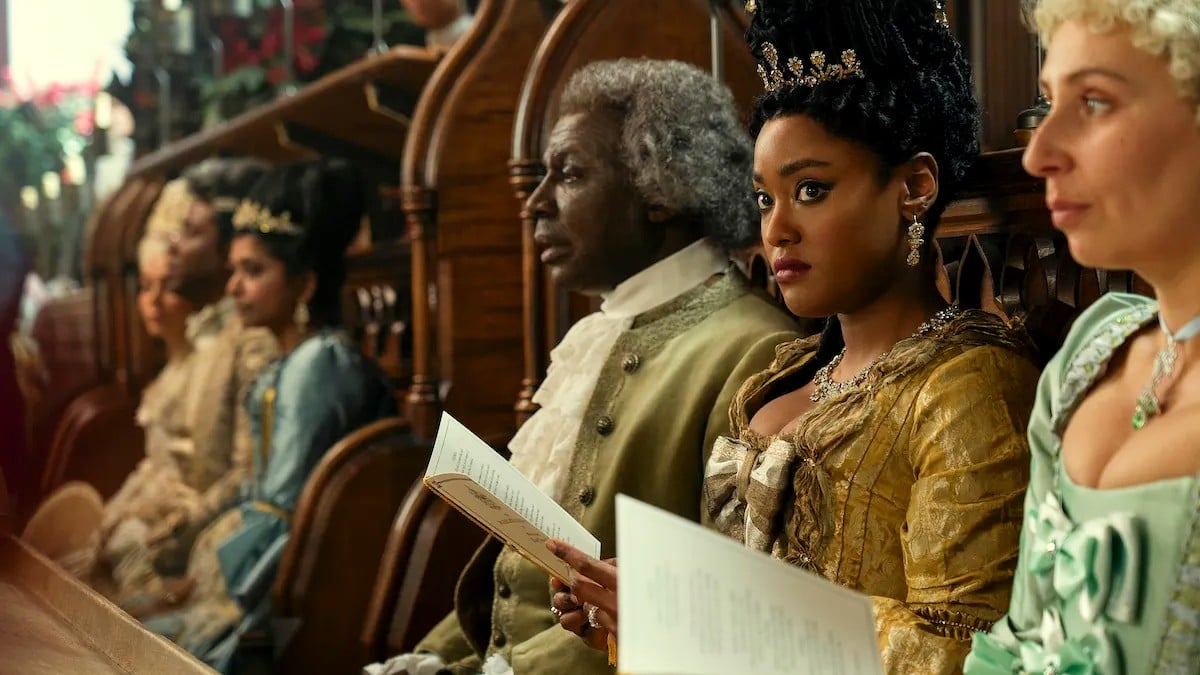
Over a week after its premiere, Queen Charlotte: A Bridgerton Story is still topping Netflix’s TV show charts and is being hailed as one of the biggest new romance series on television. The show has been praised for bringing audiences a steamy romance while also invoking some historical aspects and delving a little deeper into the racism and the lack of mental health awareness in the Regency era, though most acknowledge it’s not a perfectly nuanced depiction of racism. However, one of the biggest problems with Queen Charlotte is being oddly glossed over, and it’s the consent issue.
In the book, the scene is also disturbing because Daphne takes advantage of Simon while he is drunk. The main problem with the show’s depiction is that it largely glosses over how this was an instance of sexual assault, as well as Simon being a Black man in the TV adaptation, which introduces troubling racial dynamics to the assault. Bridgerton does so poorly at demonstrating any concern for Simon that some even argue that the scene wasn’t rape or sexual assault. Now, Queen Charlotte: A Bridgerton Story has seemingly not learned its lesson from its predecessor and once more depicts marital rape in a problematic manner.
Queen Charlotte: A Bridgerton Story’s problem with consent
Queen Charlotte’s issues with consent arise with its depiction of young Agatha, Lady Danbury (Arsema Thomas). She is Queen Charlotte’s (India Amarteifio) lady-in-waiting and the wife of Lord Danbury (Cyril Nri), with whom she was betrothed at the age of three. In the show, Lord and Lady Danbury’s ages aren’t confirmed. However, Lady Danbury is estimated to be in her mid-20s, while Lord Danbury is likely in his 60s. The whole premise of their relationship is quite horrifying, as it seems Lady Danbury was groomed from the time she was three to be the wife of an adult man.
The show then depicts Lady Danbury being raped by her husband a total of four times throughout the series. While marital rape was legal at the time, and it isn’t wrong to explore that gut-wrenching reality, Queen Charlotte’s depiction of Lady Danbury’s abuse is excessive and disturbing. She is left repulsed after these assaults and is shown taking scalding baths afterward to cleanse herself from her husband. The major problem with this depiction, though, is that Queen Charlotte doesn’t handle it as if it’s rape. The show incomprehensibly actually tries to make the repeated assaults, and the way they play out onscreen, a running gag, in which it depicts Lord Danbury as an old fool who later dies while having sex, and jokingly tries to contrast the Danburys’ “bad sex” with Queen Charlotte’s and King George’s (Corey Mylchreest) steamy intimacy.
Once again, the show’s handling of marital rape has left viewers arguing that the scenes don’t depict sexual assault, despite that they very much do. In an article for Women’s Health, Nylah Burton recalled how, when she expressed disgust at the marital rape scenes, social media users told her she was “exaggerating” and claimed the show just depicted “bad sex.” Burton wrote, “But it wasn’t just bad sex—Lady Danbury is groomed to be this man’s wife from age three, seems to dissociate during sex, and when she wants to abstain, it seems to come with consequences.”
It’s clear that the show was depicting marital rape with its decision to make Lady Danbury a grooming victim and to capture the dissociation and disgust she experienced during these assaults. Hence, its decision to simultaneously try to make these moments “humorous” is deeply disturbing and makes it seem like the show is downplaying the seriousness of marital rape. Considering that just half a century ago, marital rape was legal in the United States and Britain, and it continues to occur today, Queen Charlotte needs to take a clear stance against the act or simply exclude the depiction altogether, since it’s not particularly big on historical accuracy.





